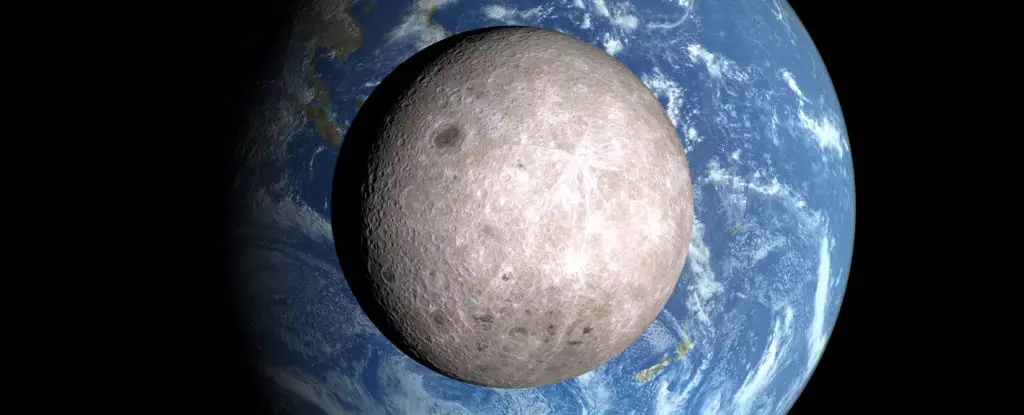Recent investigations into the water distribution on our Moon have revealed surprising discrepancies between its two hemispheres. Notably, the side of the Moon that faces Earth—known as the near side—harbors far more water compared to the far side, which is permanently hidden from our view. This revelation is not just a trivial detail; it could transform our understanding of lunar evolution and the processes that shaped our celestial neighbor.
The analysis of lunar samples brought back by China’s Chang’e-6 mission has triggered renewed interest and debate within the planetary science community. The implications of a heterogeneous water distribution are profound, raising questions about the Moon’s geological history and the cosmic events that led to its formation. Such disparities suggest that the Moon’s evolution was influenced by factors we are only beginning to comprehend.
Distinct Lunar Landscapes: A Contrast in Craters and Maria
To understand the significance of the water distribution, it’s essential to examine the stark physical differences between the Moon’s hemispheres. The far side, with its rough and heavily cratered surface, starkly contrasts with the near side’s smooth, flat basalt plains, also known as maria. This disparity could provide clues about the Moon’s formation and subsequent geological processes.
One theory posits that a massive impact approximately 4.5 billion years ago, involving a Mars-sized body named Theia, influenced the physical and compositional differences between the hemispheres. Debris from this cataclysm coalesced to form the Moon, resulting in a variety of geological features. The near side’s volcanic activity led to the formation of extensive maria, while the far side remained largely untouched by such processes.
The asymmetry in this celestial body prompts intriguing questions. Why was the near side so much more geologically active than the far side? Could it be attributed to the heat radiating from the Earth, which possibly caused the near side to cool more evenly, forever altering the Moon’s geological trajectory?
Insights from Lunar Mantle Analysis
Recent findings suggest that the lunar mantle contains varying levels of water, depending on its quadrant. The new data paints a picture of the Moon’s interior that is remarkably complex—not just a lifeless rock floating in space, but a dynamic and evolving entity. The analysis led by planetary physicists Huicun He and Linxi Li reveals that the mantle material from the far side of the Moon yields significantly low water abundance, measured at roughly 1 to 1.5 micrograms of water per gram of rock.
However, the implications of this discovery extend far beyond mere statistical data. The relatively low hydration levels in the far side’s geological materials invite interpretations tied to the Moon’s theorized violent birth. If the far side represents the remnants of the violence unleashed during its formation, does this mean that other, yet unexplored areas of the Moon could challenge our current understanding of its history?
Moreover, if our current findings are merely a snapshot of the Moon’s complex structure, with potentially wetter areas yet to be discovered, how might future missions expand our knowledge and alter our theories surrounding lunar evolution?
Future Missions and Continued Exploration
The idea that the Moon might hold more secrets beneath its surface is tantalizing. Future missions, such as sample-return initiatives from unexplored regions, could prove vital for corroborating the initial findings of Chang’e-6. These missions may not only broaden our understanding of the Moon’s water distribution but also unlock new insights into its overall geological history.
As scientists sift through the samples collected, they will continue to look for vital signs of hydration within mineral compositions like olivine and ilmenite. These minerals, integral to understanding the Moon’s geothermal processes, offer clues about the conditions that prevailed in its formative years.
The international interest in lunar exploration underscores the growing fascination with our natural satellite. As nations invest in advanced space missions, we might be on the cusp of breakthroughs that could revolutionize our comprehension of not just the Moon, but also the broader dynamics of planetary formation throughout the Solar System. One thing is clear: the Moon is far from barren; it is a testament to the chaos of our early solar system, a time when fleeting histories and cosmic incidents shaped celestial bodies—paving the way for further discovery and understanding.

